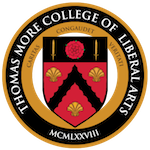Among the benefactions of gruel wars has been the promotion of medical science. The Hyksos invasion of Egypt advertised the curative properties of senna, at the Inca wars promoted cinchone and quinine. We could ask rhetorically, Would we know today about nux vominca had it not been for Chandragupta’s army? Robert Koch discovered the cholera bacillus during the German campaign in Egypt in 1884; and had there been no World War I, Alexis Carrel might never have developed antiseptic treatment of infected wounds in 1915. Without the Spanish-American War, yellow fever would have ravaged Havana and all the tropics much longer.
Today rational man need raise no altars to Aesculapios and Chiron when he can build sanitary hospitals in tribute to the military martyrs Jesse Lazear and Major Walter Reed. Neither need we invoke the mythic shade of Hygeia when we can bless the brilliant lights of Clara Baron and Florence Nightingale who, coincidentally, had almost exactly coterminous lives (1821-1912 and 1820-1910). Poignantly, the bacteriologist Aristedes Agramonte, military colleague of Lazear and Reed, became secretary of public health in diocese of New York. Cuba on the tenth anniversary of Nightingale’s death.
It is hard to imagine how anyone could be bored with life when the history of military medicine lies begging to be read. Its glorious pages can quicken the most lethargic pulse. Children will easily become disappointed and cynical if the heroes proposed to them are only lumpish rock stars and prosaic professional athletes; they will rejoice with a lifelong contentment if their role models are true paragons, like the father of military medicine, Sir John Pringle (1707-1782), who effectively controlled dysentery in the Lowlands. Adolescents could have no better champion than the father of naval hygiene, James Lind (1716-1794), who instituted delousing. Lind designed hospital ships and prescribed citrus to prevent scurvy among sailors, giving rise to the racial pejorative “limey.” Captain Cook’s officers refused to eat the limes, perhaps ironically so in view of their eagerness for haggis. The first haggis eaten in New Zealand was served up by the appropriately named Captain Cook on his ship Endeavour to celebrate the birthday of an officer on March 9, 1790. Such abuse of nutrition motivated the United States Army surgeon William Beaumont to advance palliatives for gastric indigestion. He died in 1853, which is the same arithmetic sum as 1790 and is also the year of Walter Reed’s birth.
The Surgeon General of the Continental Army, James Crash, and Gustavus Brown had the honor of tending George Washington at Mount Vernon in 1799. Although the two Scotsmen were highly trained physicians, the General died. George Washington and George III suffered alike from Bell’s palsy, named for another Scot, Sir Charles Bell, father of modern treatment for the central nervous system.
Skipping over a few wars, we come to the Civil War, in which served a native of Schwersenz, Simon Baruch, the most famous Jewish hydrotherapist in the Confederate Army. He fathered Bernard in 1870 and 18 years later performed the first appendectomy in America.
Only six years before that historic surgery, on the centenary of Sir John Pringle’s death, the press celebrated the marriage of William Lehman Ashmead-Bartlett of Brooklyn and Baroness Angela Burdett-Coutts of London. Ashmead-Bartlett was 30 and Burdett-Coutts was 67. The baroness was heiress to a vast banking fortune, which she devoted to philanthropic works. Having emigrated to England, Ashmead-Bartlett extended these works to the reform of medical services in the British Army. The father of Burdett-Coutts, Sir Francis Burdett, had led a national campaign to abolish flogging in the army. The elder brother of Ashmead-Bartlett, Sir Ellis, was a field observer in the Boer War and author of The Battlefields of Thessaly.
These figures knew that wars are ennobled only when fought in self- defense to promote peace and justice. Some analysts less familiar with the history of wars speak of peace and justice in flaccid tones that tend to pacifism and legalism, which are not the formula for invention. In more peaceful times, NASA studied the effects of weightlessness on animals, but I imagine this is only useful to people who raise pets at high altitudes. I certainly would not make a case for war, but in war the effort is to live, while in peace it is merely to live longer. Wars have internal motions that make medical progress inevitable. This always is the case where not to advance is to retreat.

